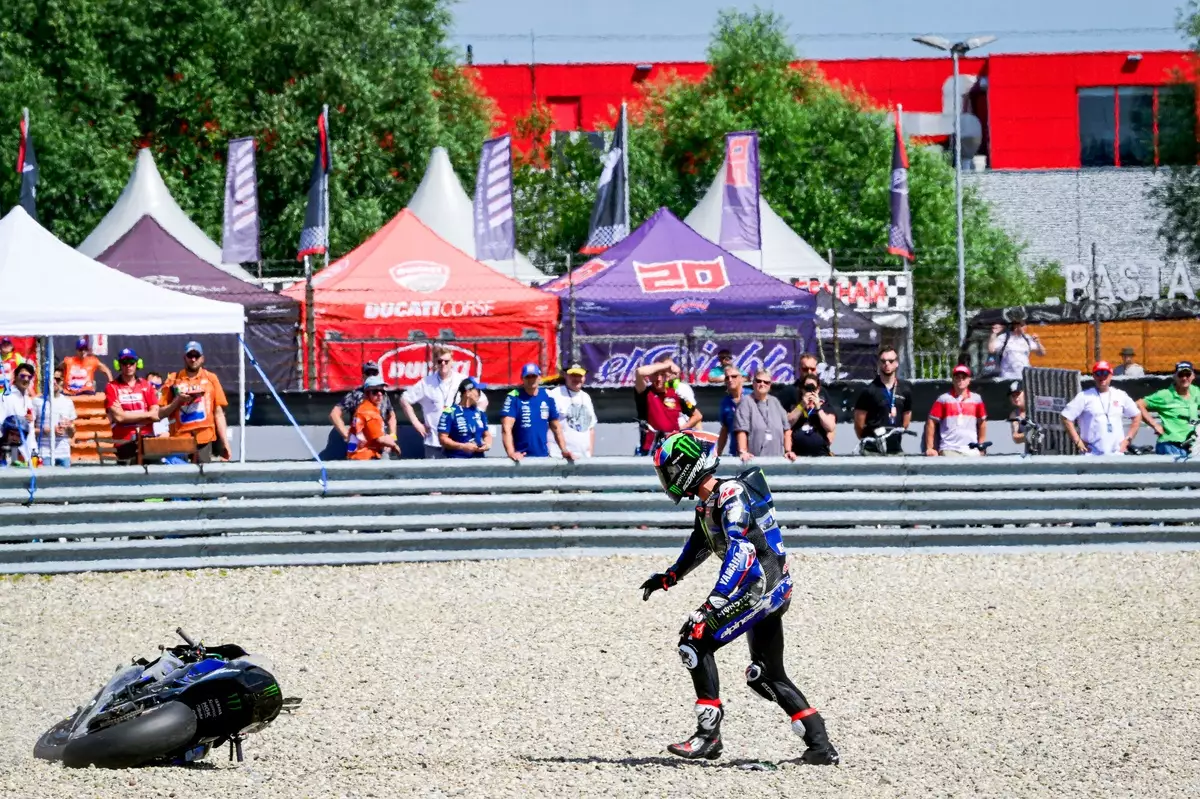The world of MotoGP is rife with uncertainties, especially concerning rider performances following significant injuries. One such case is that of Alex Rins, whose transition from a distinct wave of triumphs to a painful struggle post-injury raises eyebrows across the racing community. Despite Rins’ difficulties following a severe leg injury sustained during the Mugello round, Yamaha’s unwavering confidence in him—evidenced by their decision to renew his contract until 2026—presents an intriguing dilemma: why would a top-tier team place such substantial faith in a rider whose recent performances have not lived up to prior standards?
Rins’ track record in MotoGP is impressive; six race victories and 18 podium finishes over eight years highlight his undeniable talent and competitive spirit. Before his injury woes, Rins was viewed as a promising rider who could potentially secure championships, particularly during his earlier years with Suzuki. It is this legacy that likely propelled Yamaha to take a chance on him. Even as injuries plagued him this season, Rins’ historical performance indicates he still possesses the skill set to shine in challenging conditions.
However, the question at hand is whether his past achievements can translate into future success, especially given the physical repercussions of his injuries. In racing, muscle memory and physical fitness play crucial roles—it is not uncommon for athletes to struggle re-adapting to their previous performance levels after serious accidents. The contrast between Rins’ historical prowess and his more recent struggles begs for critical examination. After competing in only seven races compared to his teammate Fabio Quartararo’s 13, the disparity in point acquisition emphasizes the extent of Rins’ challenges on the track.
The impact of Rins’ accidents cannot be overstated. The severity of his injury, which included fracturing both his ankle and tibia at Mugello, led to multiple surgeries in a bid to return to peak condition. Following another fall at Assen that compounded his misfortune—this time adding fractures to his wrist—the repercussions have significantly disrupted his season. Under normal circumstances, a rider must garner consistent scores throughout the season to build momentum and confidence; Rins’ inability to do so leaves fans and analysts questioning his potential resurgence.
Every race counts, and while Rins has eighteen points in his pocket, he could not compete effectively against teammates or rivals, restricting him to mediocre results. With a best placement of 13th and only eight points over numerous races, Yamaha has placed itself in an ambiguous position. The question arises: What exactly does Yamaha foresee in Rins that justifies such unwavering support amid these turmoil-filled times?
Despite critical discussions surrounding his situation, Yamaha’s comfort with Rins stems from a forward-looking approach. The decision to renew a rider’s contract prior to his complete recovery implies confidence in his ability to contribute fundamentally to the development of the Yamaha M1. Key figures in the Yamaha team, including Rins’ former Suzuki bosses, have emphasized his capacity as a developer. His insight into bike dynamics and sensitivity toward setups are qualities that manufacturers covet, particularly when navigating technical evolutions in MotoGP environments.
Yamaha has undergone a significant transformation in its technical strategies, and the insights garnered from a seasoned rider like Rins could expedite advancements. The motorcycle manufacturer is evidently looking beyond short-term gains, cautiously banking on Rins’ recovery to foster long-lasting competitive advantages against their rivals on the grid.
Despite the evident risks, Yamaha’s decision to maintain Rins on their roster appears calculated rather than whimsical. The contributions to bike development that Rins has made in the past—the deep knowledge he possesses after years with Suzuki—form a foundational basis for why Yamaha might see value in retaining him. Insights suggest that Rins carries a unique ability to correlate performance characteristics between different bike configurations—an asset in the quest to enhance Yamaha’s machinery in upcoming seasons.
With Rins’ past achievements, built upon experience mixed with a commitment to innovation, it seems that both he and Yamaha are intertwined in a narrative of resilience. As Rins recovers, the potential for a turnaround is entirely plausible. In the high-stakes world of MotoGP, sticking with a rider of Rins’ caliber—even amidst doubts—can ultimately lead to illuminating successes down the line. This latter perspective encapsulates the nuanced dialogue surrounding Rins within the larger MotoGP milieu—a juxtaposition of challenges and opportunities defining the paths of champions.


Leave a Reply